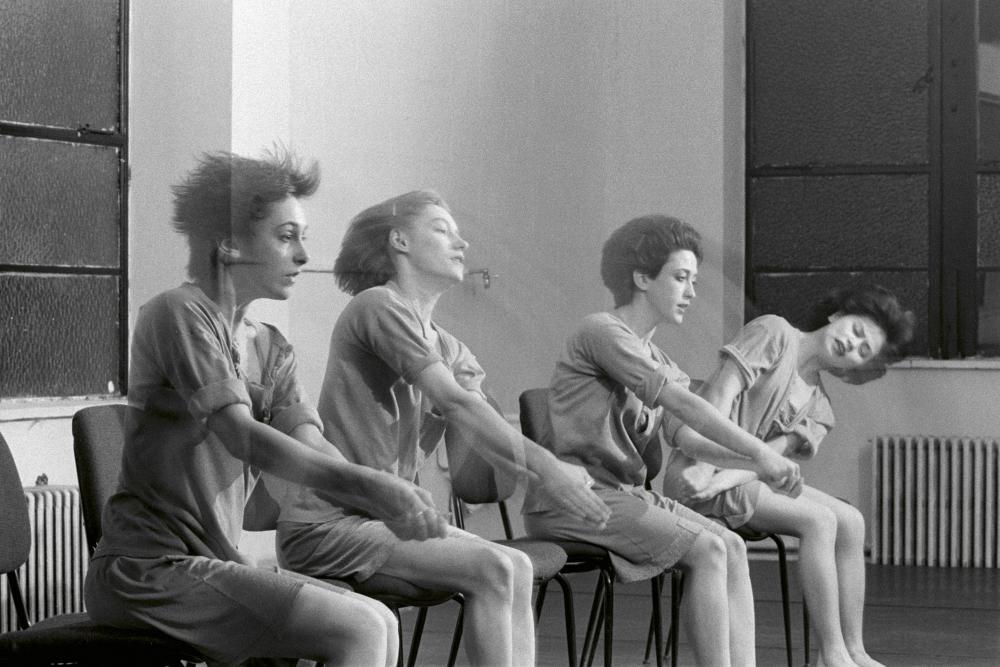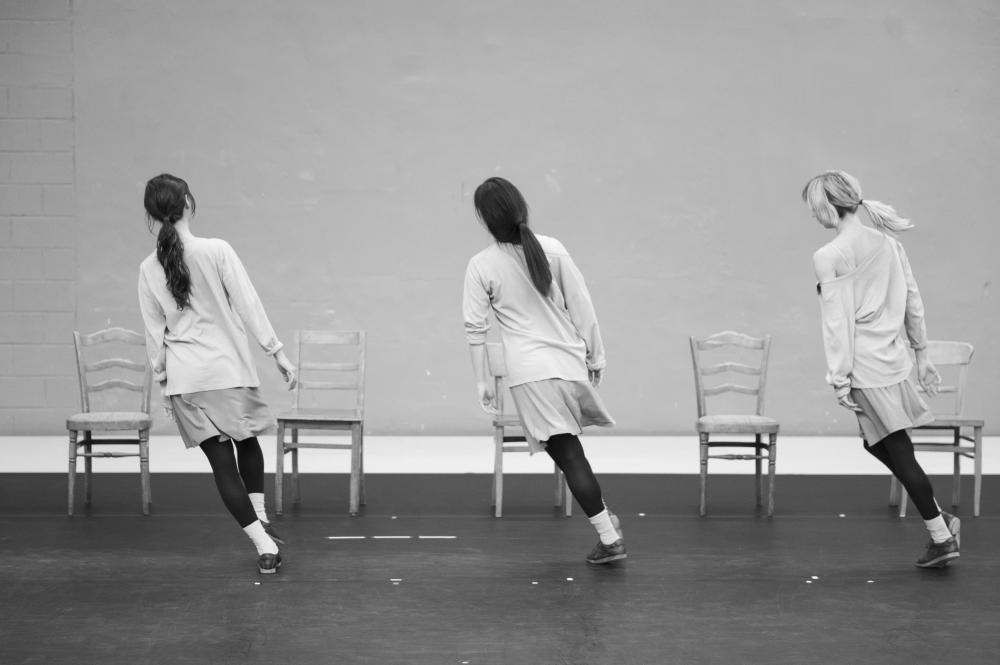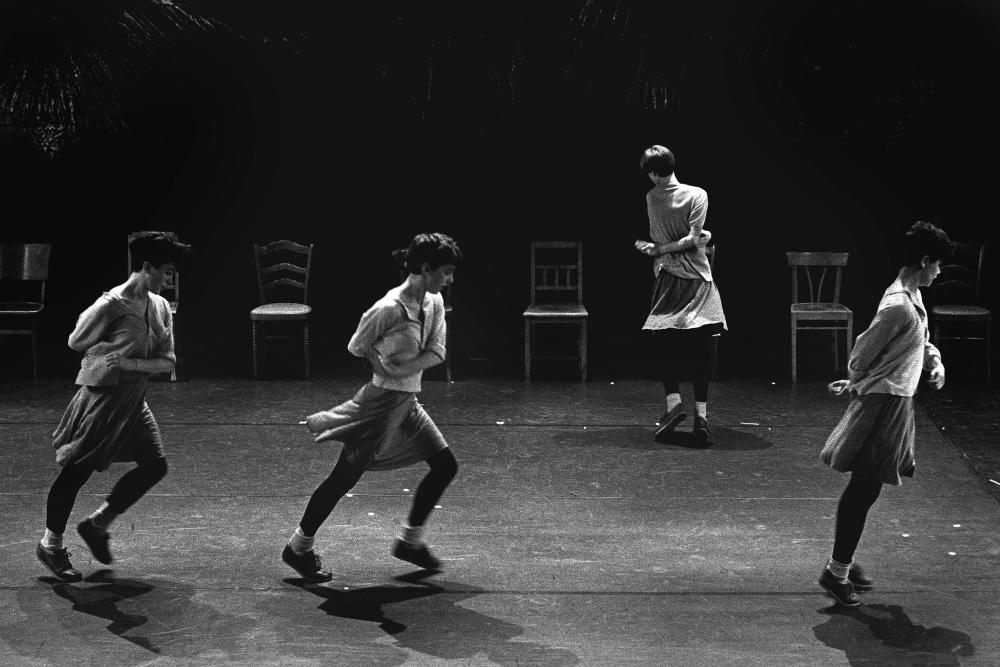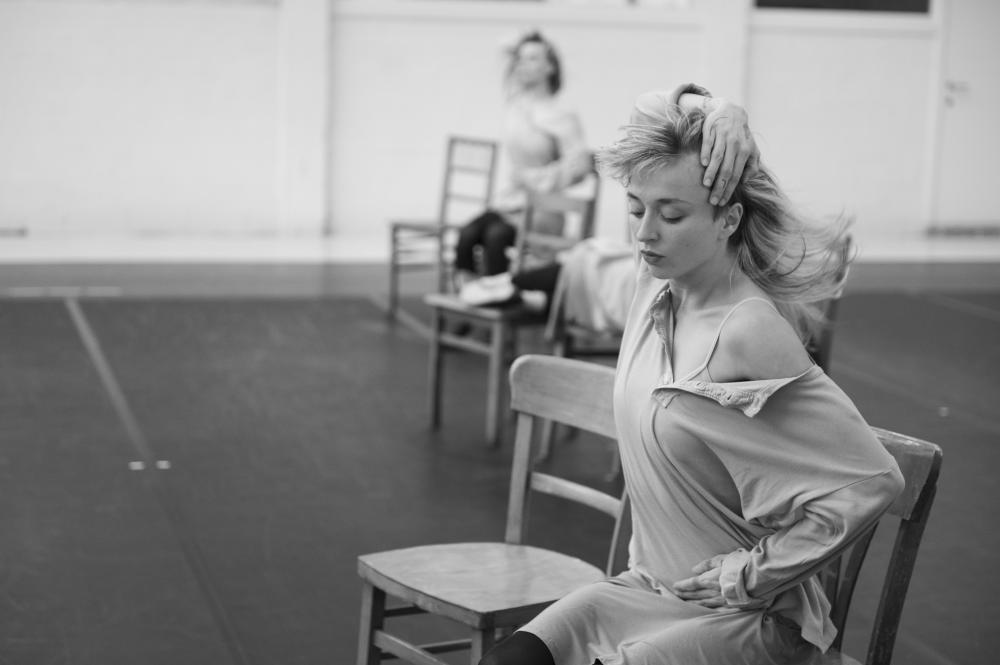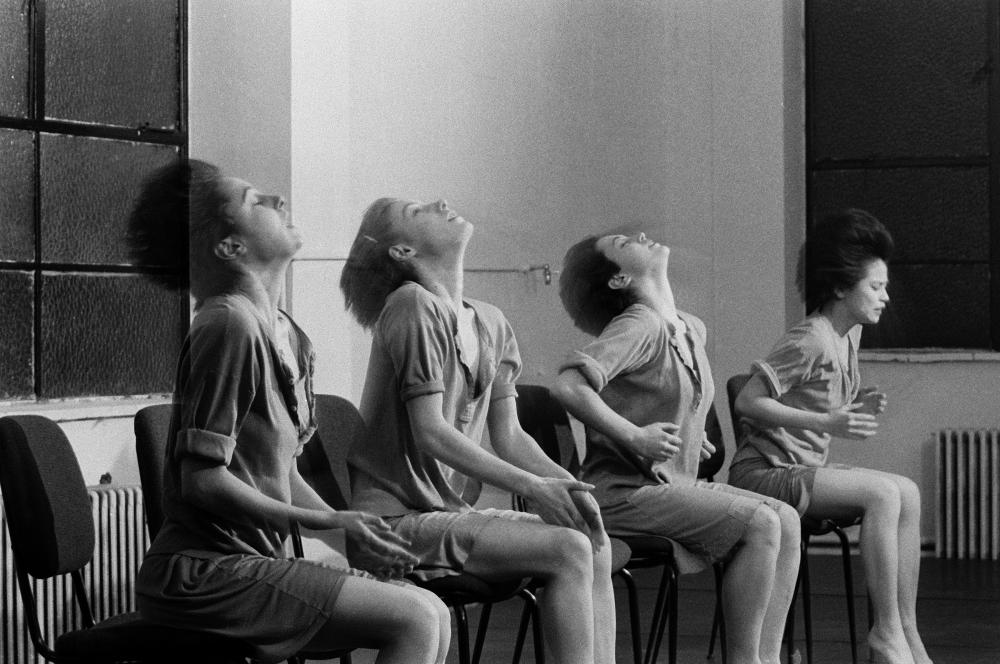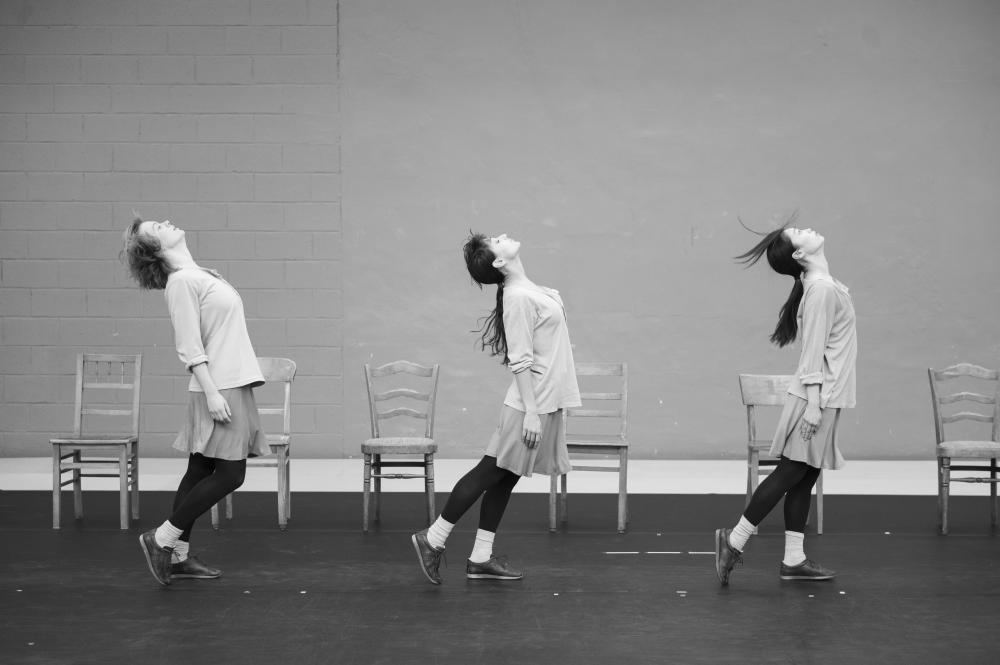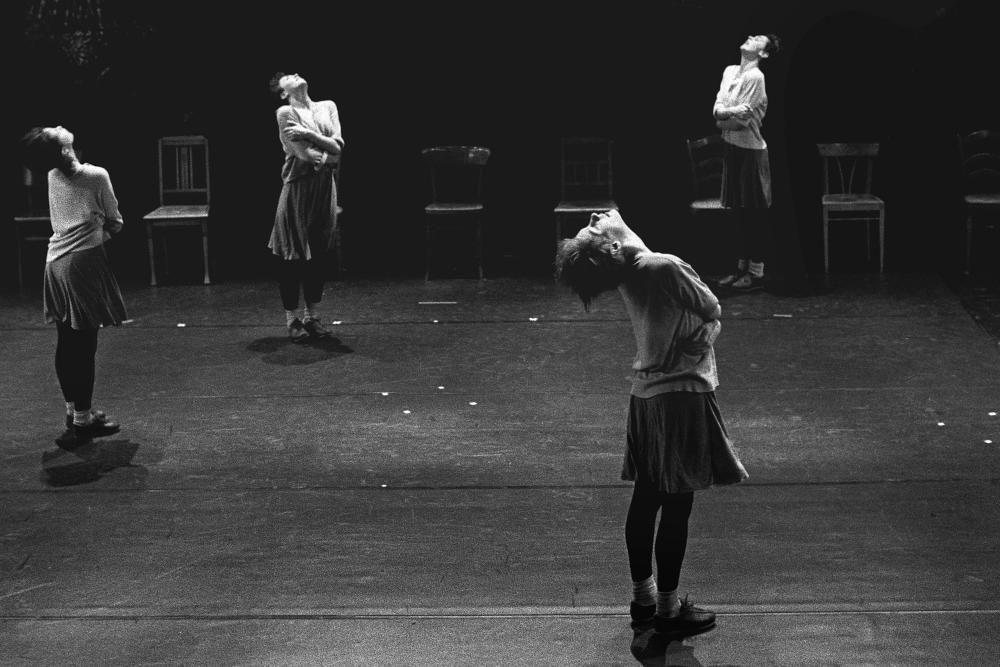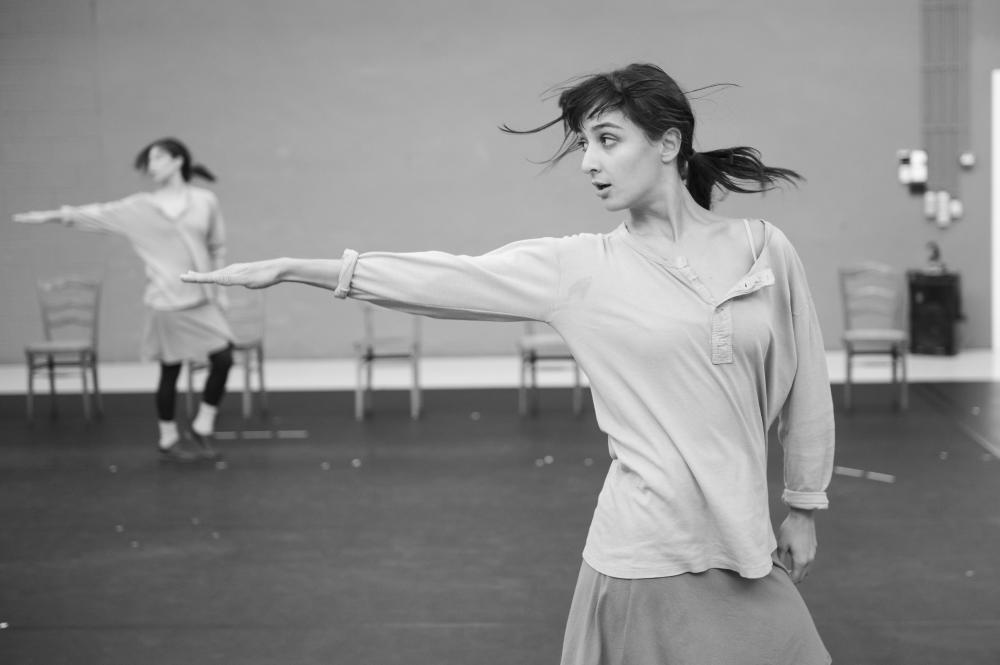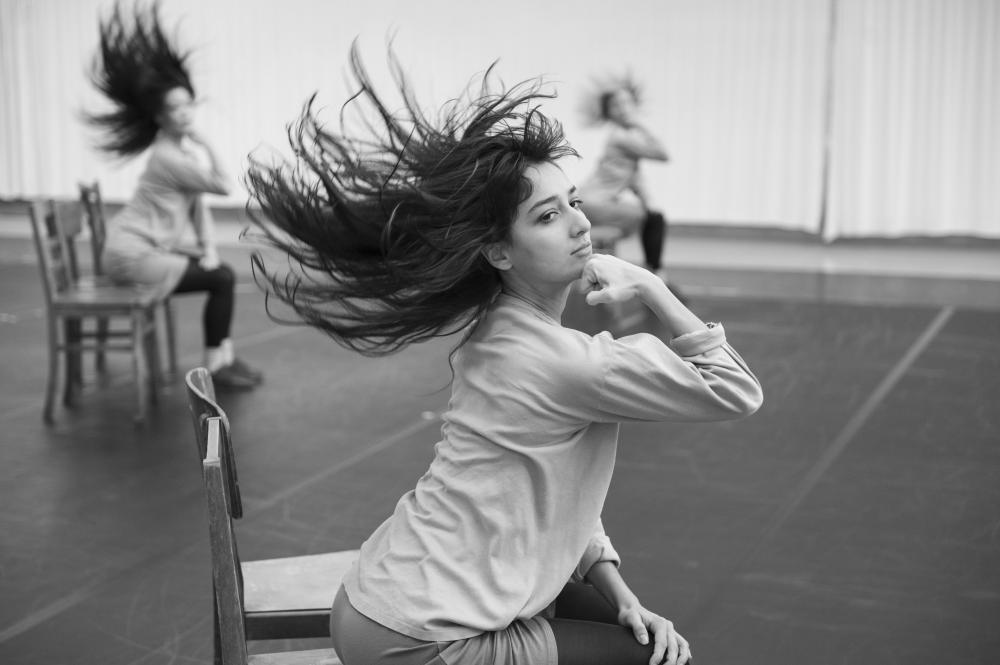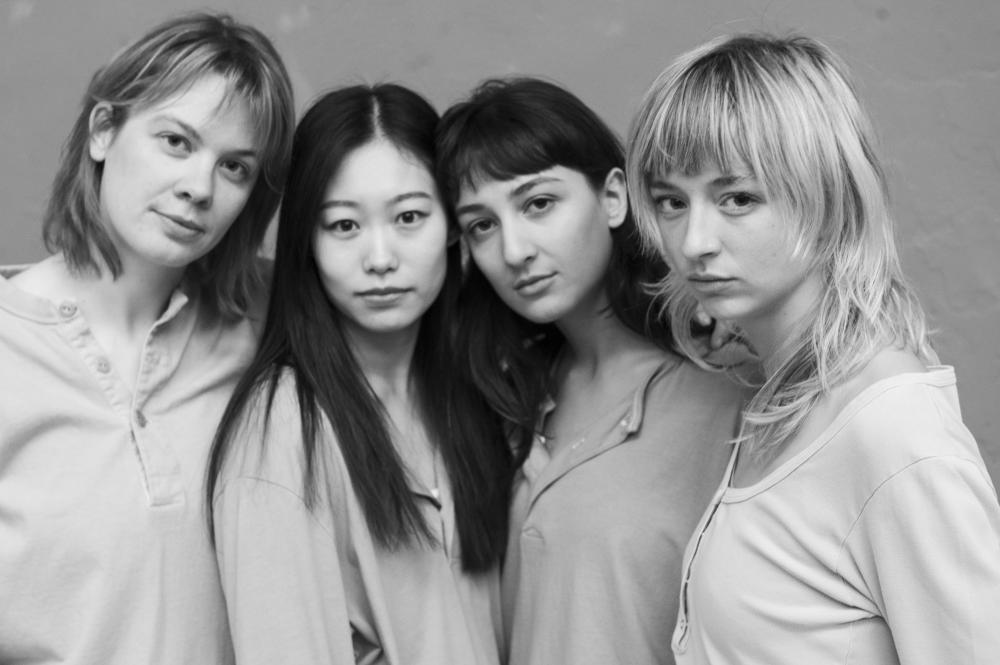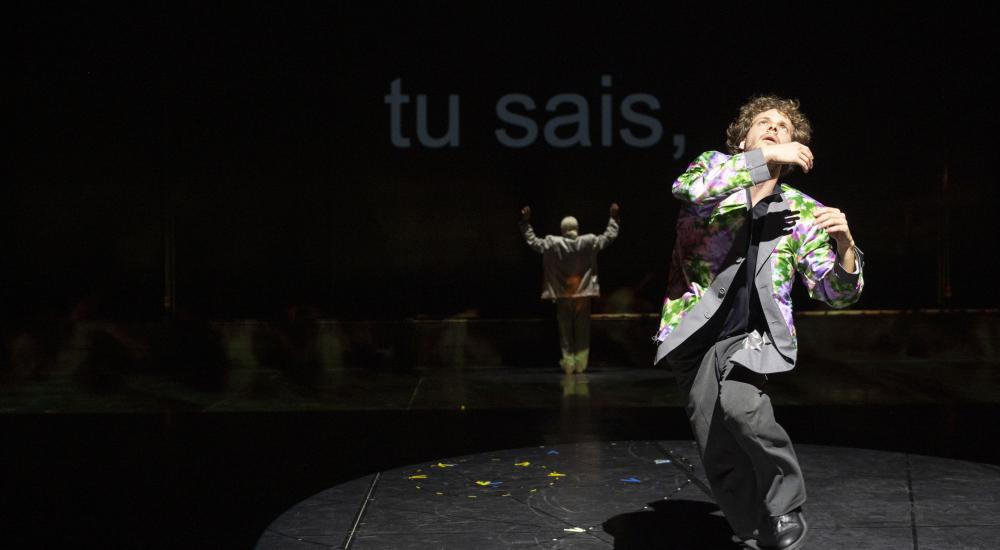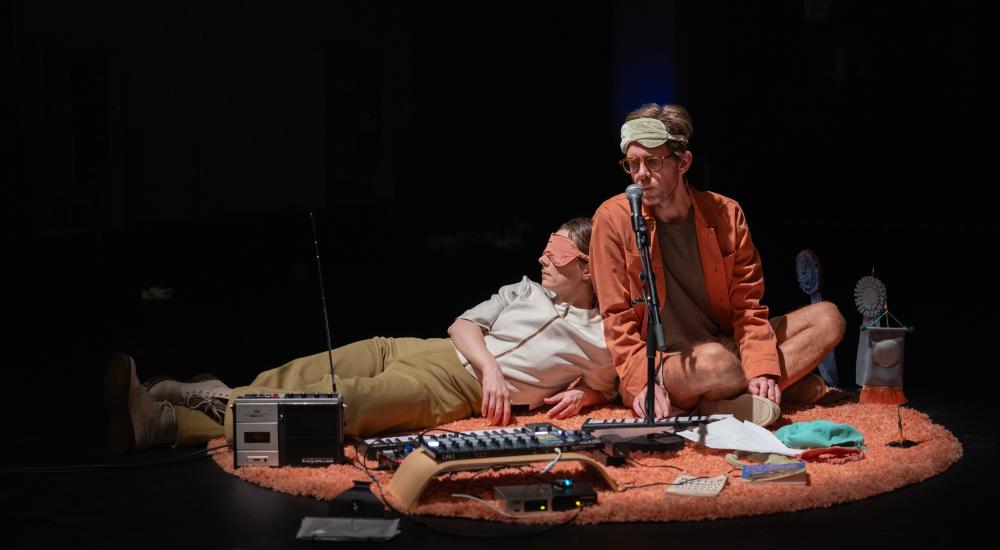Rosas danst Rosas
In 1983, Anne Teresa De Keersmaeker had her international breakthrough with Rosas danst Rosas, a performance that has since become a benchmark in the history of postmodern dance. Rosas danst Rosas builds on the minimalism initiated in Fase (1982): abstract movements constitute the basis of a layered choreographic structure in which repetition plays the lead role. The fierceness of these movements is countered by small everyday gestures.
In 1983, Rosas danst Rosas was viewed as explicitly female; a feminist statement. Four female dancers dance ‘themselves', over and over again. Their perseverance and exhaustion create an emotional charge that contrasts sharply with the rigorous structure of the choreography. The repetitive, “maximalist” music by Thierry De Mey and Peter Vermeersch was created concurrently with the choreography. The film version of Rosas danst Rosas, recorded in 1997 by De Mey, quickly became as iconic as the performance itself.
Via the online participatory platform Re:Rosas!, anyone can learn the 2nd movement – a simplified version of the chair section. Hundreds of dance lovers from all over the world have shared their own videos this way. Since 1983, the performance has taken place almost 500 times, by 28 different dancers from 5 generations. This restaging of Rosas danst Rosas will be danced by a completely new cast.
• Anne Teresa De Keersmaeker (1960, Belgium) created her first choreography Asch in 1980, after studying dance at Mudra in Brussels and the Tisch School of the Arts in New York. Fase, Four Movements to the Music of Steve Reich premiered two years later. In 1983 De Keersmaeker founded the dance company Rosas in Brussels, during the creation process of the performance Rosas danst Rosas. Since then, her choreographic work has been based in a meticulous exploration of the connection between dance and music. With Rosas she created an extensive oeuvre that uses musical structures and scores from different eras, from early music to contemporary compositions and pop. Her choreographic practice also draws formal principles from geometry, mathematical schemes, nature, and social structures, resulting in a unique perspective on the movement of the body in time and space. In 1995, De Keersmaeker founded the school P.A.R.T.S. (Performing Arts Research and Training Studios) in Brussels, in collaboration with De Munt/La Monnaie.
choreography Anne Teresa De Keersmaeker ⎸ danced by Momiji Kuromaru, Nina Godderis, Jasmine Achtari and Eva Galmel ⎸ created with (1983) Anne Teresa De Keersmaeker, Adriana Borriello, Michèle Anne De Mey, Fumiyo Ikeda ⎸ music Thierry De Mey, Peter Vermeersch ⎸ musicians (recording) Thierry De Mey (percussion and piano), Walter Hus (piano), Eric Sleichim (saxophone), Peter Vermeersch (clarinet) ⎸ lighting Design Remon Fromont ⎸ costumes Rosas ⎸ production Creation 1983 Rosas, Kaaitheater, Klapstuk ⎸ Rerun 2026 Rosas ⎸ coproduction Early Works Sadler’s Wells (London), Les Théâtres de la Ville de Luxembourg ⎸ Rerun 2017 De Munt / La Monnaie (Brussels), Sadler’s Wells (London), Les Théâtres de la Ville de Luxembourg ⎸ Rerun 2026 Dance Reflections by Van Cleef & Arpels ⎸ rerun with the support of Dance Reflections by Van Cleef & Arpels ⎸ Rosas is supported by the Flemish Community and the Flemish Community Commission (VGC)
